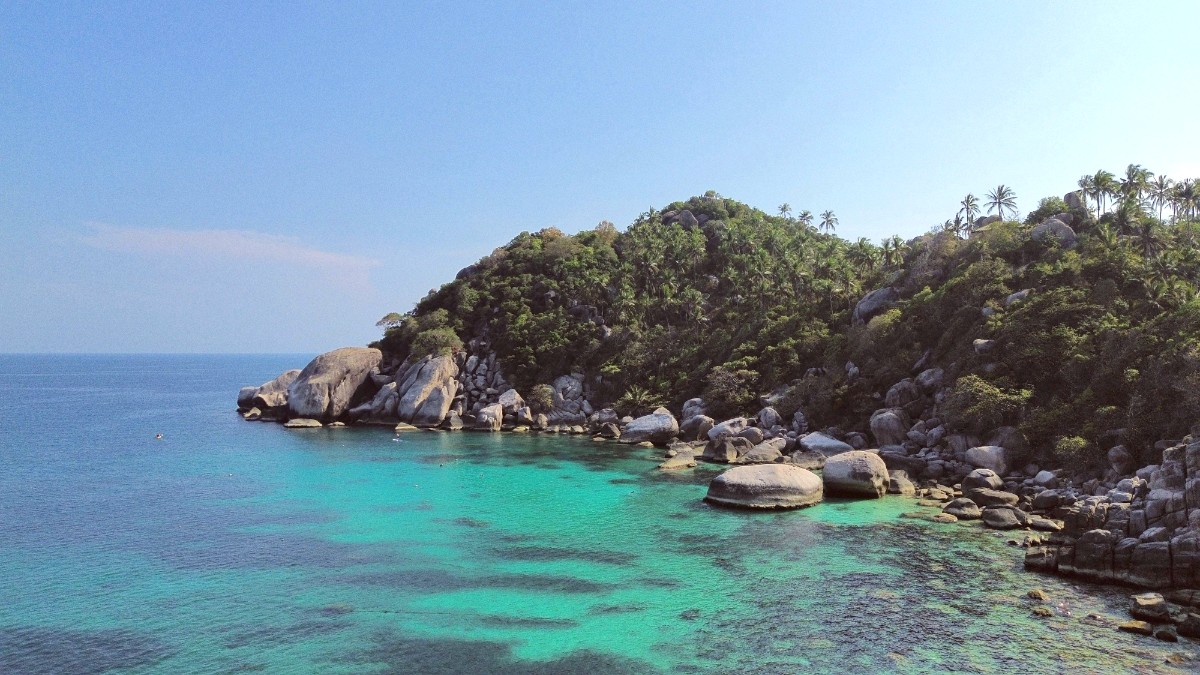
Lower Southern Gulf, Thailand
The island has a tropical monsoon climate, which means it is warm all year, but experiences distinct wet and dry periods. Daytime averages range from 28°C to 32°C (82-90°F) throughout the year. Nights offer a slight coolness, with temperatures around 24°C to 26°C (75-79°F).
High humidity is a constant feature of Ko Tao’s climate, typically ranging from 70% to 90% year-round, making the temperatures feel warmer than they are. Tropical storms or hurricanes are rare in the Gulf of Thailand.
The Northeast Monsoon (October to December) brings strong winds and heavy rainfall. Rough seas can result, which sometimes disrupts ferry services and affects diving conditions.
While generally hot, Ko Tao does not experience extreme heat waves. The constant high humidity makes the temperatures feel warmer than they are.
(February - April & July - September)
Excellent weather, calm seas, high diving visibility. Great underwater experiences.
Accommodation and activity prices are higher. The island is more crowded. Booking everything in advance is often needed.
(May - June & January)
Weather remains good, but with fewer crowds. Prices are often more competitive. Diving conditions are still good.
May and June can bring occasional heavy rain. January might still have some residual wind or rain.
(October - December)
Prices are at their lowest. The island sees fewer tourists, and the scenery becomes lush and green.
High chance of heavy rain and rough seas. Diving visibility can be lower. Ferry schedules might be limited.
March-April and July-September offer the best visibility and calmest waters. These periods increase your chances of spotting whale sharks and other large marine life.
February-April are ideal due to drier conditions, though it can be very hot. January and May-June are also suitable. Avoid hiking during the peak monsoon months due to slippery trails and heavy rain.
Best between March and May, and September and October.
February-April and July-September provide sunniest days and calmest conditions.
Low season (October-December) is most budget-friendly.
Shoulder season (May-June & January) offers a less crowded experience.
High season provides consistently clear waters for all marine activities.
These rules depend on your nationality and how long you plan to stay. Gathering your documents ahead of time prevents issues upon arrival.
Citizens of many countries can enter Thailand without a visa for stays up to 30 days when arriving by air. For land or sea, a limit of two entries per calendar year applies.
For stays longer than visa exemption or for specific nationalities, a Tourist Visa (TR) is necessary. This visa allows a 60-day stay, extendable by 30 days within Thailand.
No general entry fee applies for visa-exempt entries. Visa on Arrival incurs a 2,000 THB fee.
Prices vary significantly based on your travel style and choices. Your daily expenses on Ko Tao change based on how you travel.
The local currency is the Thai Baht (THB). ATMs are common on Ko Tao, found in major areas like Sairee Beach, Mae Haad, and Chalok Baan Kao. Inform your bank about your travel plans.
Cash is the preferred payment method for most small transactions, local shops, and street food vendors. Larger resorts and some restaurants accept credit cards, but often add a 2-3% surcharge.
Daily costs for hostels, street food, and minimal activities.
Very affordable accommodation and food options.
Limited comfort, privacy, and activity choices.
Daily costs for mid-range hotels, varied dining, some tours/dives.
Good balance of comfort, dining, and activity access.
Requires careful budgeting for a full range of experiences.
Daily costs for boutique resorts, fine dining, extensive activities.
Unrestricted access to top amenities, dining, and private tours.
Can become expensive rapidly with a focus on premium experiences.
| Category | Item | Price Range (THB) |
|---|---|---|
| Accommodation | Hostel dorm bed | 250 - 500 per night |
| Meals | Street food dish | 60 - 120 |
| Transportation | Scooter rental | 200 - 300 per day |
Your well-being on Ko Tao holds great value. A well-stocked personal health kit prepares you for common travel ailments.
No mandatory vaccinations needed for entry.
Consult a healthcare professional 4-6 weeks before your trip for common recommendations (Hep A/B, Typhoid, Tetanus, Rabies).
Dengue fever is present. Use Insect repellent with DEET or Picaridin.
Traveler's Diarrhea:
Common due to changes in diet. Drink only bottled or purified water. Avoid ice unless you are sure of its source. Eat well-cooked food.
Sunburn & Heatstroke: The tropical sun is intense. Use high SPF Reef-safe sunscreen. Stay hydrated by drinking plenty of water.
Jellyfish: Stings can occur. Be aware of local warnings and consider wearing a Rash guard.
Several small clinics on Ko Tao for minor injuries and basic consultations (e.g., Ko Tao International Clinic).
For serious conditions, transfer by speedboat or ferry to larger hospitals on Ko Samui (Bangkok Hospital Samui).
Available on the island for common medications and first aid supplies.
Ko Tao is generally safe, but be aware of common concerns.
The main weather consideration is the Northeast Monsoon (October-December).
Heavy rains can cause localized flooding and mudslides, notably on hilly terrain.
Sea conditions can become very rough, leading to ferry cancellations.
Lower risk than Andaman Sea, but warning systems are in place.